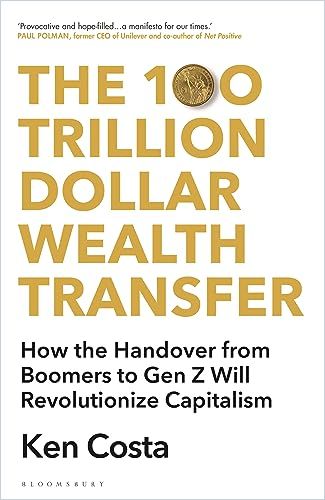Banker Ken Costa highlights some fundamental differences in the “Zennial” and baby boomer financial mind-sets.

“Zennials” Explained
Yesteryear’s hippies are today’s holders of wealth and power, while their kids and grandkids wonder how the oldsters can be so out of touch. Former chairman of UBS Investment Bank and Lazard International Ken Costa argues that while boomers can’t change youngsters’ idealism, they should understand their children’s values, especially when it comes to money.
Money and Power
The graying of the baby boomers sets the stage for a generational transition. Some $84 trillion of wealth in the United States will move from older cohorts to younger ones. The rise of younger generations is about a power shift, too. By 2030, millennials will account for three-quarters of the global workforce. Across the world, many presidents and prime ministers were born in the 1980s. Boomers shaped global capitalism, but younger folks don’t love what they’re about to inherit. Young people are moving from their parents’ brand of individualism toward a collaborative, cooperative ethos.
The major shift that will make or break the future of the market economy is intergenerational.
Ken Costa
The crash of the global economy spurred a leftward shift among millennials and generation Z, or the “Zennials.” Zennials embrace ideals about working and spending that differ greatly from boomers’ outlooks. The anticapitalist tendencies of the Zennial generations are deeply ingrained. Zennials — even those who achieve great wealth — embrace idealistic views about wealth inequality and taxation.
Boomers generally regard Zennials as coddled and unwilling to work. Zennials view their elders as clueless souls who have done little to make the world a better place or to prevent ecological disaster. Homeownership is a hallmark of upward mobility, but many Zennials cannot buy a home. Owning a property is a gateway to capitalism, but a generation of tenants won’t feel invested in an economy.
Zennials reared on social media bring parallel, rapid, and impulsive reactions to their investing moves and business decisions. Consider GameStop: During the COVID-19 pandemic, young investors combined forces to pump up shares of GameStop, and the retailer’s stock soared by 1,500% in a month. This wasn’t Zennials embracing capitalism; it was a case study in generational discontent. Investors bid up GameStop as a collective action against Wall Street and against the hedge funds that had shorted GameStop shares. The GameStop bubble was a Zennial outcry.
Technology
Money has morphed from the physical to the digital. Cryptocurrency takes that to a new level by creating money with no underpinning in the physical world. Bitcoin and other cryptocurrencies don’t appeal to Zennials for their functionality; crypto allows young people to register their dissent. Fully 94% of cryptocurrency owners are millennials. As boomers pass on assets to Zennials, much of that new wealth will move into cryptocurrencies.
While we are closer and more connected than ever before across borders and communities, our closer, personal connections have been fractured.Ken Costa
In the 2010 movie The Social Network, a film depicting Facebook’s origins, a character marvels that 650 Harvard students signed up for the site in a single day. That seemed a big number at the time. Today, soccer star Cristiano Ronaldo has 581 million Instagram followers, footballer Lionel Messi has 457 million followers, and actress Selena Gomez has 412 million followers. All are Zennials, and the massive numbers illustrate the growing reach of technology — a tool that defines the Zennial cohort.
Collaboration
Zennials are no more narcissistic than boomers. Many young people focus on the well-being of their communities and the broader society. Zennials push back against their parents’ capitalism because they’re community-minded. Many embrace collectivism, but boomers should nudge Zennials away from collectivism and toward a version of community-mindedness that’s more beneficial to society.
Boomers largely subscribe to the “Great Man Theory.” This mind-set holds that a single visionary — such as Napoleon Bonaparte, Winston Churchill, or Steve Jobs — is what a society, nation, or organization needs to succeed. Zennials honor decentralized and collaborative leadership. They distrust the status quo, and that distrust extends to the legitimacy of command-and-control business leaders. For Zennials, leadership means relying on input from all levels of an organization. This ideal draws on the power of networks and varied viewpoints. Co-leadership can be distinct from collectivism. Unlike the Soviet model of collectivism, co-leadership is collaborative without trampling on individual rights.
Impact investing is the comprehensive response of a generation that will not be satisfied by purely financial criteria.
Ken Costa
Boomers remained in hierarchical workplaces to climb the career ladder while ignoring their personal needs and family lives. Zennials reshape workplaces by valuing cooperation over competition and flexibility over formality.
Before 2020, only 6% of US workers did their jobs from home. That percentage changed dramatically during the pandemic. The nature of physical workplaces is evolving, too. Offices are transforming into “creative clusters,” places akin to pubs or cafés where people work and socialize. Zennials value flexibility and might work early in the day or late at night. Zennial workers exhibit more emotional intelligence with their colleagues than do boomers. Zennials prove more willing and able to connect and cooperate.
Zennials prioritize compassion and drive the corporate embrace of values-based investing. Prominent economists George Akerlof and Robert J. Shiller wrote that “noneconomic motivations” can also drive consumers. This theory encapsulates the Zennial ethos.
Middlebrow Overview
While Ken Costa keeps saying that Zennials regard boomers as being somewhat out of touch, he offers a quintessensially boomer overview of perceived differences between the two age groups. Costa’s insights are not new, and they barely scratch the surface of the issues he raises. His work seems aimed at clueless boomers his age and older; Zennials will not search for their self-protraits here. Costa does offer valuable thoughts on the GameStop stock bubble and how Zennials used this market play to suggest their disdain for market plays. Frustrated grandparents may find Costa’s advice worthwhile, especially his urging older generations to understand the new universe of digital capital.












